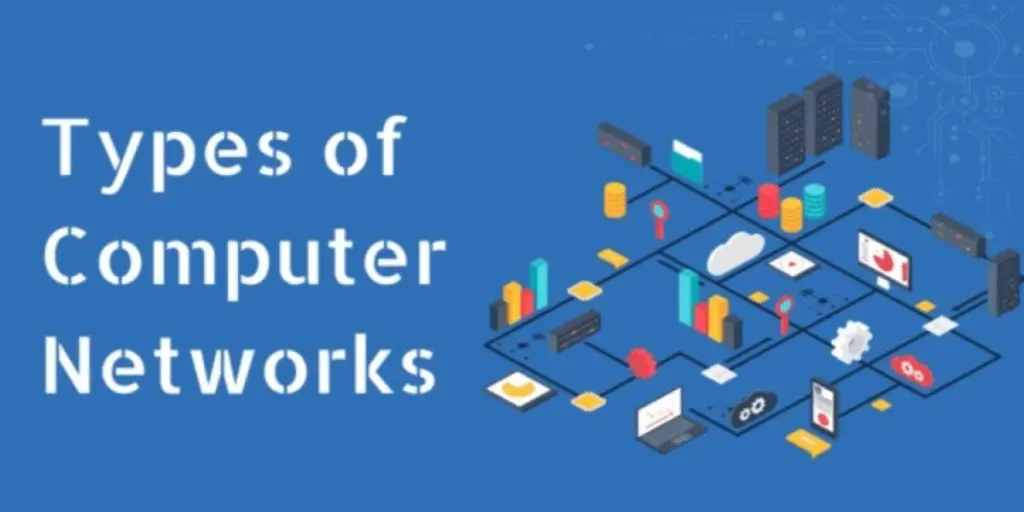In today’s digital era, a computer network serves as the backbone for communication among interconnected devices, fostering seamless data sharing and efficient collaboration. The evolution of networking technologies has propelled global connectivity, enabling information exchange and resource sharing on an unprecedented scale. The Internet, a pinnacle of technological advancement, facilitates seamless interaction and enhances productivity through innovative connectivity solutions.
The history of networking technology is a fascinating journey that has revolutionized the way we communicate and share information globally. Beginning with the advent of ARPANET in the late 1960s, the foundation for modern networking was laid. The development of Ethernet, TCP/IP protocols, and the birth of the internet in the 1980s further accelerated connectivity.
What is computer networking?
Computer network refers to a system of rules that enables interconnected computing devices to exchange data and share resources. Through a combination of physical and wireless technologies, these networked devices benefit from increased efficiency, streamlined communication, and improved security. This connectivity allows for centralized control, enabling remote access and collaborative work. The application of communication protocols facilitates various activities such as file sharing, data transfer, and internet access, supporting diverse functions like distributed computing, online gaming, video conferencing, and information retrieval.
How does a computer network work?
In computer networking, nodes act as the basic building blocks, connecting through links such as cables, optical fibers, or wireless signals. These network nodes, including computers, printers, and other data communication equipment like modems, hubs, and switches, form a framework for efficient data transmission. The transmission media, be it physical like cable wires or optical fibers, or wireless through free space, is crucial for establishing robust computer networks.
What do computer networks do?
In the 1950s, computer networks were initially developed for military defense purposes, utilizing telephone lines to transmit crucial data. Over time, the advent of internet technologies expanded their applications to commercial and scientific realms. As enterprises recognized the importance of connectivity, the first computer networks were created to deliver limited but indispensable networking solutions.
Operate virtually
Computer networks play a pivotal role in modern networking systems, creating a logically partitioned infrastructure where nodes are virtually linked. This overlay allows for efficient data transmission by utilizing physical paths. In enterprise networks, this facilitates improved productivity as it enables collaborative efforts and resource sharing through networked systems, fostering an environment where data can be transmitted seamlessly to support remote access.
Integrate on a large scale
In the realm of computer networks and networking, the evolution towards modern infrastructure has been remarkable. Distributed systems now seamlessly connect various nodes, both physically and virtually, allowing for the creation of large-scale networks. To optimize the performance of these networks, advanced networking services leverage automation and monitoring tools, ensuring adaptability to fluctuating demands. Whether scaled up or scaled down, these networks efficiently cater to the ever-changing demands of today’s dynamic digital landscape.
Respond quickly to changing conditions
In the realm of computer networks, the advent of software-defined solutions has revolutionized the landscape. These systems enable centralized control over the routing of traffic, offering a virtual traffic management paradigm. The digital interface facilitates efficient handling of diverse data streams, providing unparalleled support for seamless operations.
Provide data security
An effective strategy for safeguarding a computer network involves the integration of various security features into a cohesive framework. The deployment of antimalware tools and encryption technologies contributes to the creation of a secure and resilient network. Organizations must not only rely on integrated security features but also consider supplementary networking solutions to address the evolving nature of cyber threats.
What are the types of computer network architecture?

Computer networks are essential components of modern technology. The design of these networks generally falls into two broad categories. One category focuses on local connections, while the other deals with wide-reaching connections on a global scale. The intricate networking structures within these categories play a crucial role in ensuring seamless communication and data transfer across various devices.
1. Client-server architecture
A computer network is a collection of interconnected nodes that include servers and clients, allowing them to communicate and share resources. In enterprise networks, various devices with different levels of processing power and memory work together. For example, a server machine may provide centralized data storage and manage configuration settings for the entire network. This collaborative behavior enables efficient processing and access to shared resources.
2. Peer-to-peer architecture
In a computer network, multiple computers connect to a central server for efficient coordination. Each device can act as a client or server, allowing them to share resources like memory and processing power. This equal distribution of privileges ensures a balanced system where no single entity holds disproportionate control. Some companies opt for a P2P architecture, promoting a decentralized approach where each peer has equal powers, fostering collaborative networking.
What is network topology?
Understanding the concept of network topology is crucial for efficient computer network and networking. The arrangement of nodes and links in a network determines its structure, and there are various types of network topologies that can be configured in different ways. Common network topologies include bus, star, ring, mesh, and tree. Each has its unique configurations, impacting the outcomes of communication, data sharing, and resource accessibility.
Bus topology
In the realm of technology, a computer network serves as the backbone for seamless data transmission. Through intricate connections between various nodes, these networks facilitate swift and efficient exchange of information. The collaboration of these elements not only enhances communication but also enables systems to help each other in achieving optimal functionality.
Ring topology
In a computer network, a node represents a point where devices or systems are connected, forming a structured framework for the efficient flow of data. These nodes can be linked in various configurations, such as a ring topology where each node is connected to two others, allowing bi-directional communication. However, it’s crucial to address potential points of failure within the network, as a single malfunctioning node can sometimes bring down the entire network, disrupting the seamless flow of data.
Star topology
Computer networks play a crucial role in today’s interconnected world. They consist of multiple client network devices linked together through various topologies, facilitating the seamless exchange of data. A central server node serves as the command center, ensuring a reliable and efficient flow of information. The benefits of well-designed computer networks are evident in improved communication, resource sharing, and streamlined operations.
Mesh topology
In the realm of computer networking, the choice of topology plays a pivotal role in shaping the efficiency and reliability of a system. A full mesh configuration, where every node is directly connected to every other node, offers distinct advantages in terms of robustness and fault tolerance. With this interconnected setup, collaboration among nodes becomes seamless, allowing for efficient data transfer and improved performance across various applications.
What are the types of enterprise computer networks?
Understanding the benefits of computer networks is crucial for any enterprise. Different types of networking solutions can significantly help improve communication and collaboration within an organization. Efficient computer networking fosters seamless information sharing and resource utilization, ultimately enhancing overall productivity. Embracing and implementing diverse networking technologies tailored to an enterprise’s specific needs can unlock a multitude of advantages.
Local area network (LAN)
In computer networking, a LAN (Local Area Network) is a networking system that connects computers and devices within a limited geographic size, often within an office or building. It is commonly used by small companies to establish an interconnected environment, enabling efficient communication and resource sharing among connected systems. This type of networking is ideal for small-scale prototyping and serves as a test network for various applications.
Wide area networks (WAN)
In the dynamic landscape of computer networks, organizations are leveraging advanced networking solutions to bridge the gaps between local area networks (LANs) within their enterprise buildings and extend connectivity across wide area networks (WANs) that span entire cities and even countries. The evolution of SD-WAN (Software-Defined WAN) has revolutionized the traditional approach, offering a flexible and dependable virtual architecture.
Service provider networks
In the realm of computer networks, both wide area networks (WANs) and local area networks (LANs) play crucial roles in facilitating seamless communication. These networks enable the efficient transfer of data at high speeds, ensuring a dependable and secure flow of information. Various service providers, including telecommunications companies, data carriers, and Internet service providers, contribute to the overall network capacity and functionality.
Cloud networks
In the realm of computer networks, the interconnected devices and nodes form the backbone of seamless connectivity. This intricate web facilitates efficient data transmission and fosters effective communication and information exchange. Routers and servers play pivotal roles in managing the flow of data, while established protocols govern the rules of engagement within this digital infrastructure.
Advantages of using a computer network
Today’s computer networks play a crucial role in enabling efficient use and quick exchange of information and resources within Enterprises of all sizes. From small businesses to larger, globally spread-out organizations, a common network allows employees to share critical assets such as printers, files, scanners, and photocopy machines. This beneficial connectivity fosters flexible communication through various channels like email, instant messaging apps, and video calling platforms, meeting the diverse needs and preferences of the workforce.
Cost benefits of computer networking
In this era of heightened competition, businesses are leveraging computer networks and networking to enhance their performance. A centralized system not only ensures the consistency of information but also allows staff to serve more customers in less time. Adopting standard versions for manuals and directories becomes crucial, facilitating backing up data on a scheduled basis. This not only enhances operational consistency but also serves as a robust strategy to safeguard critical information.
Conclusion
In conclusion, the dynamic field of computer networking has not only revolutionized communication but has also laid the foundation for the interconnected world we live in today. The continuous advancements in networking technologies underscore the importance of adaptability in an ever-changing digital landscape. As we move forward, the evolution of computer networks will undoubtedly play a pivotal role in shaping the way we connect, share, and collaborate, influencing various facets of our personal and professional lives.
Common Question of Computer Network
Does networking help you get a job?
Getting your name out there through networking can make your job search easier. Research shows that 70% of jobs are never published publicly, and up to 80% of jobs are filled through personal and professional connections.
How can I study networking?
You can learn about all the different protocols (theory) by reading books, watching videos, or joining a classroom course. Practical experience is achieved by building network topologies, getting your hands dirty, and configuring network devices.
Is networking career hard?
Network engineering is a fantastic career opportunity, and one that requires hard work, dedication, and continuous learning to excel in it. Given their essential job role in the organization, network engineers are well compensated with salaries typically higher than average.
How does computer network help us?
Benefits of computer networking
Not only does it allow staff to share information effortlessly, increasing productivity and efficiency, other benefits include cost-effectiveness, storage efficiency, flexibility, and data security.







